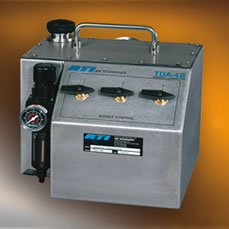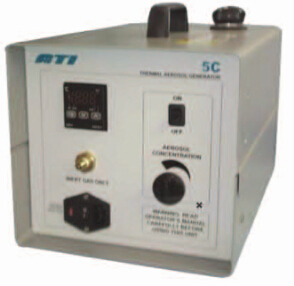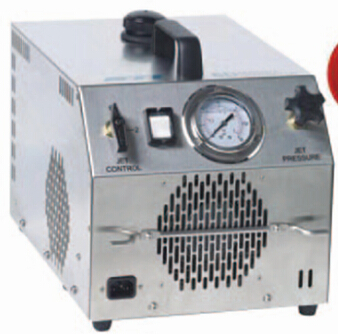High efficiency filter leak detection system leak detection application
Eas anti-theft antenna is mainly suitable for large supermarkets, shopping malls, bookstores, audio stores with Security hard tags, rf soft label, AM lable,Pin and Lanyard, eas detacher, Hook Lock ,EAS Self Alarm Tag, EAS Safer Box,etc.
Am Hard Tag,Rf Pencil Security Tag,Eas Security Hard Tag,Lanyard Hard Tag ZHEJIANG BOSHINE ELECTRONIC SECURITY CO.,LTD , https://www.cnboshine.com
1. High efficiency filter leak detection purpose
The filtration efficiency of the high-efficiency filter itself is generally detected by the manufacturer, and is accompanied by a filter filtration efficiency report and a certificate of conformity. For pharmaceutical companies, high-efficiency filter leak detection refers to on-site leak detection after installation of high-efficiency filters and their systems, mainly to check small pinholes and other damage in filter media, such as frame seals, gasket seals, and filtration. Slots on the frame of the device, etc. The purpose of the leak detection is to check the high-efficiency filter itself and the defects in the installation by checking the sealing performance of the high-efficiency filter and its connection with the mounting frame, and take corresponding remedial measures to ensure the cleanliness of the area.
2.DOP leak detection principle
Leak detection of high-efficiency filters usually uses a DOP generator to generate dust upstream of the filter. A photometer is used to detect the aerosol concentration upstream and downstream of the filter to determine if the filter is leaking. The purpose of dusting is because the dust particle concentration upstream of the high-efficiency filter is low, and only the particle counter is used for detecting without dusting. It is difficult to find a leak, and it is necessary to supplement the dust to be able to find the leak clearly and easily. Artificial aerosol DOP has been in existence for nearly 40 years. For some time, it has been suspected to be carcinogenic to humans. It is often referred to as DOS (Dioctylsebaeate dioctyl dicarboxylate), also known as DEHS[di(2-ethylexyl)sebacate]. PAO (polyaphaolefin polya olefin) or the like is substituted, but the experimental method is still called "DOP method". Atmospheric dust is sometimes large and sometimes low due to changes in its concentration with location and time, and is generally not used for leak detection. The FDA pointed out that in the case of leak detection, the selected aerosol should meet certain physical and chemical requirements, and aerosols that cause microbial contamination and microbial growth should not be used.
The DOP generator can be divided into two types: heat generation and cold generation. The heat generator uses the principle of evaporative condensation. The atomized aerosol particles are evaporated by a heater and condensed into tiny droplets under certain conditions to remove excessively large sum. After too small droplets, a fog-like DOP of about 0.3 um is left into the air passage, and the particle size distribution is 0.1 to 0.3 um. The cold generator refers to a polydisperse DOP aerosol which is made by using compressed air to bubble bubbles in a liquid and splashing through a laskin nozzle. The large distribution particle size of Zui is about 0.65 um. When scanning and leaking filters, cold DOP is often used. There are two kinds of detection instruments, one is aerosol photometer and the other is particle counter. The commonly used detection instrument for high efficiency filter leak detection is aerosol luminosity. The meter (hereinafter referred to as photometer) is a forward scattering linear photometer composed of a vacuum pump, a light scattering chamber, a photomultiplier tube, a signal processing converter, and a microprocessor. The working principle is: when the airflow is vacuum pumped to the light scattering chamber, the particulate matter therein scatters light to the photomultiplier tube. In a photomultiplier tube, light is converted into an electrical signal that is amplified and digitized and analyzed by a microprocessor to determine the intensity of the scattered light. By comparing the signal generated by the reference material, the mass concentration of the particulate matter in the gas can be directly measured, so that it is widely used. The particle counter, its test value reflects the concentration of particles in the airflow, and specifies the particle size range, its sensitivity is high, applicable to all dust source aerosols, the choice is large, but in the high efficiency filter leak detection Less used in the two, the test results of the two instruments are difficult to quantitatively compare.
3. Detection method
To determine if the HEPA filter itself and its installation have significant leakage, the following must be tested on site: filter media; filter media to its frame; filter frame gasket and filter Between the support frames; between the support frame and the wall or ceiling.
3.1 Instrument
The materials and instruments for DOP leak detection include: dust source (PAO solvent), ZR-1300 series aerosol generator, ZR-6000 series aerosol photometer.
Aerosol generator (PAO, DOP generator) 



3.2 Method of operation 3.2.1. Introducing PAO aerosol on the upstream side of HEPA to be tested
For HEPA in HVAC systems, in order to achieve a uniform concentration of aerosol when it reaches HEPA, the aerosol can be introduced directly from the negative pressure side of the system fan. If it is to be introduced from the duct, it should be at least 10 times the wind from HEPA. Introduced at the tube diameter and minimized turning (IEST American Institute of Environmental Science and Technology). Under normal circumstances, the upstream aerosol is kept at the required concentration, and the concentration fluctuation can be within a certain range. For the laminar flow hood, HEPA on the clean bench, the aerosol is introduced directly from the negative pressure side of the system fan.
3.2.2. Aerosol photometer initialization, setting 100%, 0% reference standard value
Initialize and set the alarm value according to the aerosol photometer operation requirements. Connect the sampling tube to the upstream sampling port and measure the concentration of the upstream aerosol. The concentration of aerosol generated is adjusted according to the operation requirements of the aerosol generator, so that the upstream aerosol concentration reaches (20-80) μg/L.
3.2.3. Scanning for leak detection
Remove the HEPA diffuser and scan the entire filter face, between the filter and the frame, between the frame and the frame, and between the frame and the static pressure box. The scanning head is about 1 inch (about 2.54 cm) from the filter face during scanning, and the scanning speed is no more than 5 cm/s. The scan is performed back and forth in a straight line, and the lines should overlap. During the test, if there is an alarm sound (ie, the leak rate exceeds 0.01%), it indicates a leak. Scanning inspection is carried out after the leak is blocked or fastened with silica gel. Check a filter for about 5-10 minutes. During the test, the concentration of the upstream aerosol should be checked frequently. Note that a protective mask and eye protection should be worn during the test.
4. Results determination and processing
The high efficiency filter leak rate should be less than or equal to 0.01%. If HEPA does not exceed 0.01% at all points during the test, the HEPA is judged to be qualified. If there is more than 0.01%, it is judged as unqualified, and the point is marked and needs to be repaired or replaced. The high-efficiency filter filter leakage is allowed to be repaired with special glue, but the area of ​​a single leak cannot be greater than 1% of the total area, and the area of ​​all leaks cannot be more than 5% of the total area, otherwise it must be replaced.
5. High efficiency filter leak detection cycle
The FDA recommends in the guidelines for the production of sterile pharmaceuticals that semi-annual inspections should be carried out for the sterile preparation workshop. China recommends it once a year in the GMP inspection guidelines. ISO14644-3:2005 For leak detection of installed HEPA, the recommended long interval between Zui is 24 months. DOP leak detection should be performed after HEPA installation or replacement. When environmental monitoring indicates deterioration of air quality, or when the product sterility test fails and the culture simulation filling test fails, the leak detection can be performed as part of the deviation investigation. Filters that require a leak test also include HEPA used in drying tunnels and dry ovens.
6. Discussion of the problem 6.1 High efficiency filter efficiency and leak detection
High efficiency filter filtration efficiency refers to the efficiency of the filter itself, which varies with the standards and test methods performed. The current test methods for high-efficiency filter efficiency are: DOP method, which is sensitive to particle counting, and is sensitive to particle counting. The relevant standards can be found in US IEST-RP-CC001; particle counting method, using particle counter as detection instrument, using monodisperse or Polydisperse aerosol, high sensitivity, mostly used for ultra-high efficiency filters, related standards can be seen IEST-RP-CC007; Zui easy to penetrate particle size method (MPPS), using particle counter as a detection instrument, using the same aerosol, this The method is stipulated by the European Union EN1822 standard. The difference from the particle counting method is that the particle size that is easy to penetrate by the filter is used as the particle size for testing; the sodium flame method uses a flame photometer to calculate the flame color of the NaCL combustion. In response, the relevant standards can be found in China's “High Efficiency Air Filter GB13554-92â€, which has low sensitivity and NaCl is harmful to the quality of microelectronic products. For pharmaceutical companies, high-efficiency filter leak detection is mainly on-site leak detection. The DOP method is used to discover the filter itself and possible problems during transportation and installation. Aerosol luminometers and multi-dispersion aerosols are often used because they are economical and more convenient than monodisperse aerosols.
6.2 Aerosol Photometer and Particle Counting
The instrument can use an aerosol photometer or a particle counter. The particle counter detects the number distribution of particles, often expressed in "granules/L" units, while the photometer measures the mass concentration of particles, expressed in "mg/L". The particles with a large number of zui distribution are not in the same particle size as the particles with a large concentration of zui, because the particle size and the weight are in a cubic relationship, and the particles having a large particle size occupy a large proportion in the concentration distribution. Therefore, when the filter efficiency is detected, the results obtained using the particle counter and the photometer will differ. Compared with the particle counter, the photometer is slightly inferior in sensitivity and accuracy, so it is not used to detect H13 or higher efficiency filters and ultra-high efficiency filters. For the on-site leak detection of high-efficiency filters in pharmaceutical companies, it is widely used because of its convenient use of photometers, easy detection of test results, and sensitivity to leak detection.
6.3 leak detection standard
Different criteria also differ in the determination of leak detection results. The US IEST-RP-CC034 stipulates that the on-site leak detection rate of the C, .D class high efficiency filter is 0.3 um, and the photometric scanning leak detection method is 0.01. The European Union EN1822 stipulates that the leak test is qualified as long as the local transmittance of the tested filter does not exceed the specified local value. The local transmittance of the H13 high-efficiency filter is 0.25%, but it should be noted that the transmittance here is It was obtained by a 0.3 um monodisperse phase DOP test. China's "clean plant design code GB50073-2001 and high efficiency air filter GB13554-92" in the installation of filter leakage regulations using atmospheric dust or other aerosols, testing, using a particle counter to measure the leakage concentration, for high efficiency filters The penetration rate should not be greater than 4 times the qualified pass rate of the filter. For the leak detection test of HEPA in pharmaceutical enterprises, in the actual test, if there is leakage, the photometric count value will increase significantly, and it is easy to judge. The high-efficiency filter leakage rate standard is set to 0.01% or less and does not affect the actual leakage detection.